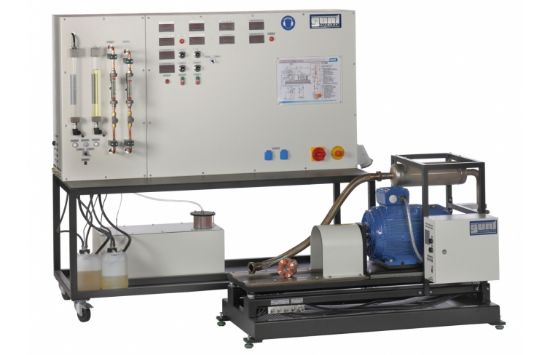This test stand measures the power output of internal combustion engines delivering up to 11kW. The complete test stand consists of two main elements: The CT 300 as the control and load unit and a choice of engine: two-cylinder petrol engine (CT 300.04, air-cooled) and two-cylinder diesel engine (CT 300.05, water-cooled).
The main function of the CT 300 is to provide the required braking power. The brake unit is an air-cooled asynchronous motor with an energy recovery unit. The braking speed and torque can be precisely adjusted using a frequency converter. The recovery of the braking energy into the system provides for highly energy-efficient operation of the test stand. The torque is measured by means of a suspended brake unit and force sensor.
The engine is mounted on a base plate and connected to the asynchronous motor. The base plate is vibration-insulated, so no vibrations are transmitted to the surrounding environment.
The asynchronous motor is initially used to start the engine. As soon as the engine is running, the asynchronous motor and energy recovery unit act as a brake for applying a load to the engine. The braking power is fed back into the electrical system.
The lower section of the mobile frame contains fuel supply tanks and a stabilisation tank for the intake air. Two separate fuel gauge systems allow the quick change between diesel and petrol operation.
The switch cabinet contains digital displays for the speed, torque, air consumption and temperatures (engine cooling water inlet and outlet, exhaust gas, fuel and intake air). The fuel consumption and cooling water flow rate in the engine and the CT 300.01 calorimeter available as an option are displayed in analogue form. The measured values are transmitted directly to a PC via USB. The data acquisition software is included.
Lifting gear is required to exchange the engines.

